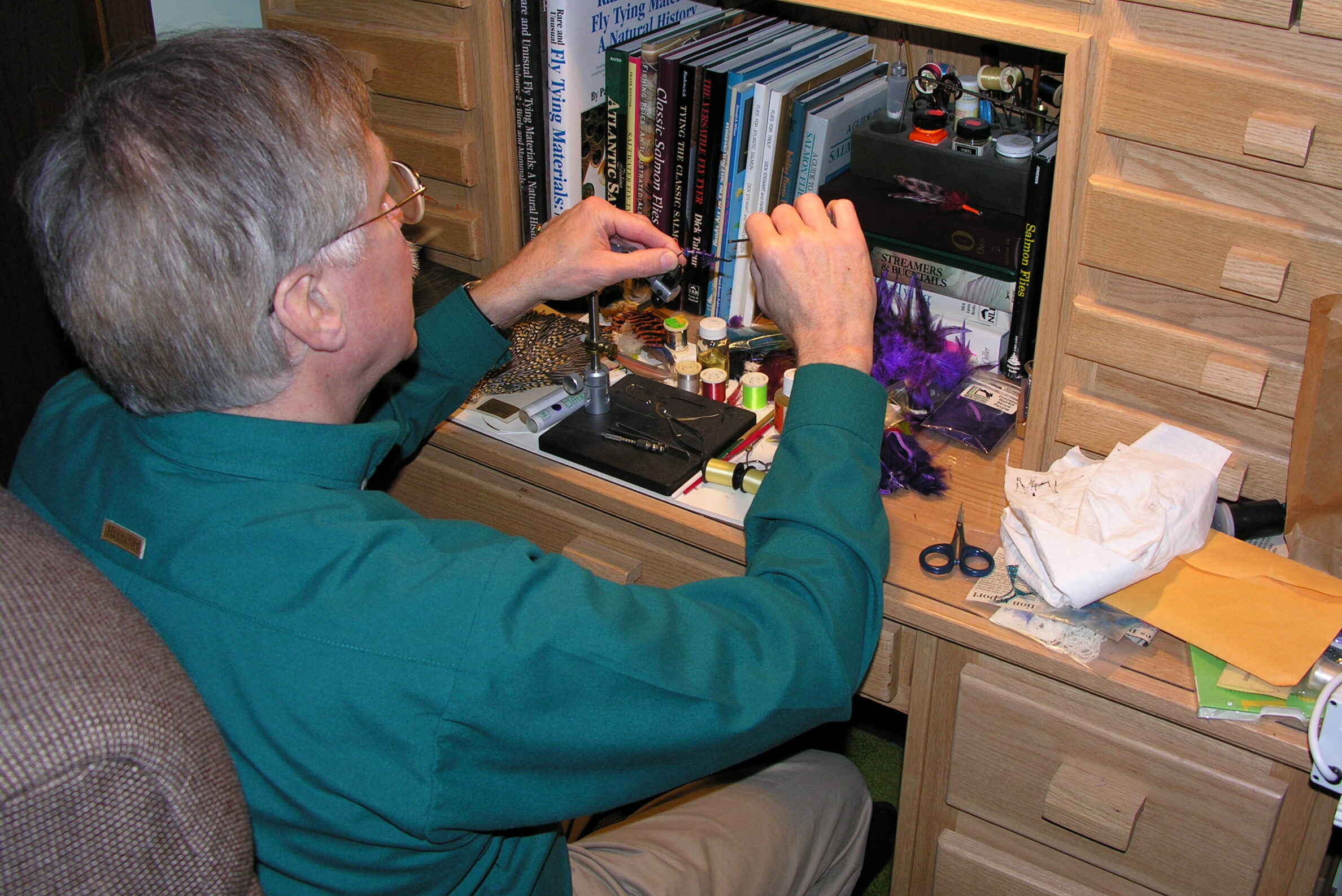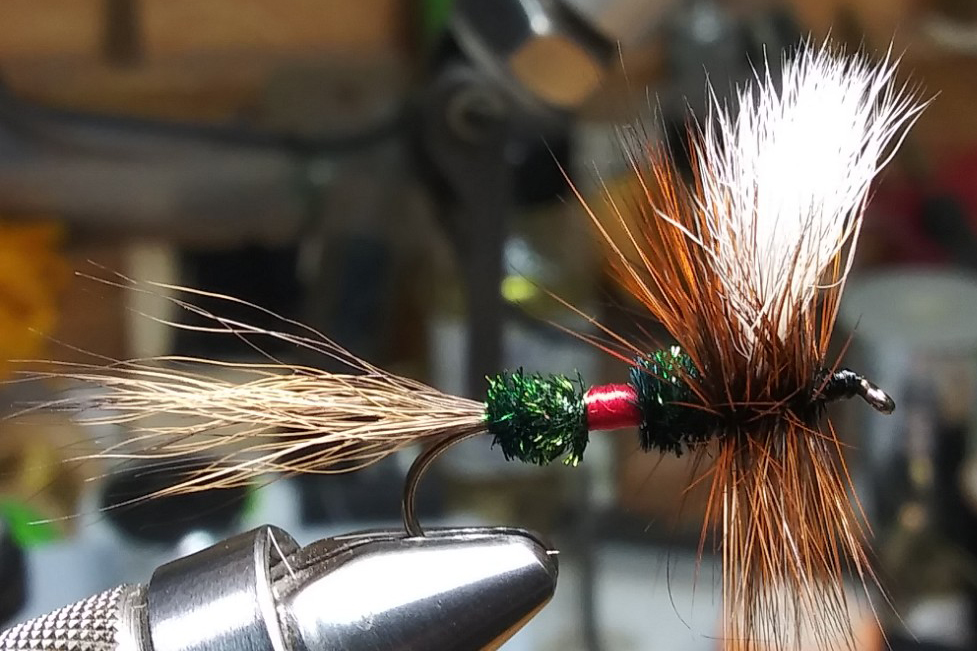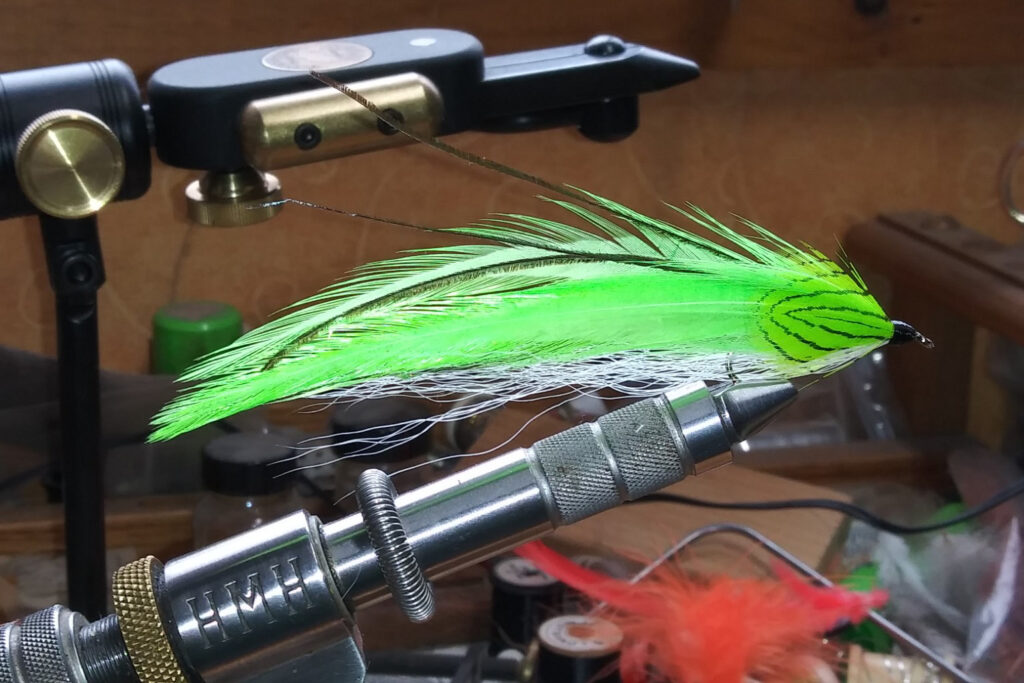
I can’t really remember how old I was when I discovered my dad’s fly-tying bench. It was actually my Grandfather Rideout’s huge roll-top desk from his B& A Railroad office. Large drawers now held old cigar boxes stuffed with every size, shape and color of feathers imaginable. Every envelope slot, small drawer, nook and cranny was filled with hooks, thread, floss, yarn, tinsel, lacquer, fly head cement bottles and lots of tying tools.
Occasionally I’d watch my dad build colorful creations, but soon would become bored and head off to do kid things. Everyone in the household understood the desk was off limits unless Dad was at hand.
When I got my very first fly rod on my 10th birthday and a plastic box with a small selection of dry, wet and small streamer flies, my outlook of the big desk, its wondrous materials and my father’s special skill all changed. My cousin Steve was three years older and been tying flies for two years, so between he, Dad and a couple of very well illustrated books, a lifelong, very rewarding hobby took root. I’m thankful on many long, dark cold winter evenings for this wonderful diversion.
No matter if you’re 8 or 80 years old, if you have an interest in fly fishing, tying your own flies offers many more benefits than just a way to pass time. It’s a hobby anyone can learn. How involved you want to be and how advanced your technique becomes is an individual decision. Every fly caster basks in the thrill of a fish striking a fly, especially when you can watch the rise and boil during the take of a floating dry fly. Imagine the extra thrill and satisfaction if you actually tied the fly. Or better yet, what if the fly was an original pattern you thought up and built?

Beyond the personal reward of fooling a variety of species of gamefish into eating a fake fly you put together, it’s easy to keep your fly boxes resupplied. The exact pattern you want may not be available at the local sporting goods store or even online, but put a hook in the vise and spend a few minutes at the tying bench and any shape, size and pattern is ready to cast. Put in the time and effort and a hand-tied creation will last longer and catch many more fish than most commercially tied flies. Even after the initial cost investment of material and tools, as well as replacing and adding new components, in the long run, tying is way cheaper than buying.
I have to warn you, the enjoyable pastime of tying trout and salmon flies for river and stream casting can take a nasty turn, becoming a bit of an obsession. Soon you’re tying tandem trolling streamers, then Atlantic salmon doubles and bass bugs, followed by nymph, leech and terrestrial imitations and then some salt water patterns. The true fly fanatics often strive for the peak of perfection, eventually attempting to recreate intricate classic salmon flies with exotic feathers and dozens of materials that take several hours to fabricate.
While age and gender have no effect on learning to tie flies, where you live might create a hurdle or two. Having a friend or family member who already enjoys the pastime is a sure-fire advantage. I was fortunate enough to have both. They can share guidance as well as a supply of tools and material. In fewer than half a dozen sessions, a novice will know if this special craft is for them or not.
In larger communities, a recreation center or perhaps a fish and game club will offer fly tying classes once or twice a year. Perhaps the local high school will have a multi-week adult ed class offering tying lessons. Sporting goods stores and fishing gear shops are also likely to sponsor lessons; it’s good for future business. If you attend annual outdoor sportsmen shows, there’s a good chance to view fly tying clinics, meet the practitioners and find an instructor or class in your area.

If a class or personal guidance just isn’t available, it’s time to explore self-teaching. It’s actually way simpler than in the past. How-to books, instructions and diagrams were limited more than 60 years ago when I was learning to tie flies. Today there are hundreds of tutorial books and, even better, lots of videos and DVDs. Top-rate, step-by-step video directions can be stopped, replayed and even enlarged for precise illustration for beginners or even veteran tiers trying to improve their techniques.
Basic fly tying kits are available for as little as $30, with enough tools and materials to tie several simple but effective patterns. Far more complete boxes with a better vise, more implements and a wider array of feathers, fur, floss, and hooks can cost up to $150. Sportsmen who become dedicated to this intricate craft will find an expansive assortment of material to fulfill their needs as ability and complex fly patterns require.
Fly fishing and fly tying go hand in hand for many hardcore anglers. I can vouch from years of experience: When it’s not possible to be on the water, rod in hand, spending time at the vise refilling my fly box is a wonderful salve for winter and a rewarding pastime.




